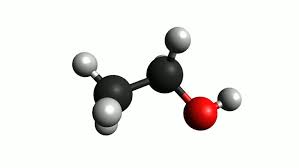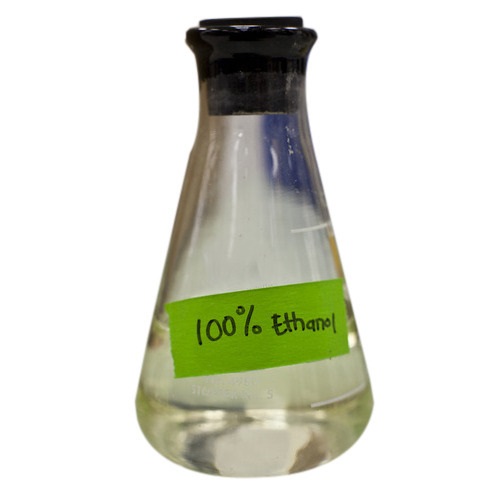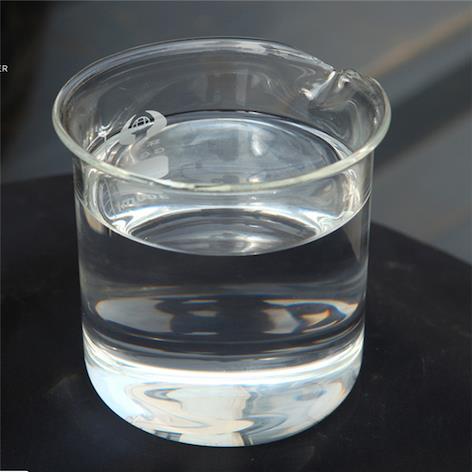Ethanol-Hazard and Toxicity
Description
Ethanol, also known as ethyl alcohol (or grain spirits, or alcohol), is a clear colorless, volatile, flammable solvent with a characteristic odor. The boiling point of ethanal is 78.5°C. The bio-alcohol is found in alcoholic beverages. Concentrated alcohol has a strong burning taste, but it is somewhat sweet when diluted. It is also increasingly being used as a fuel (usually replacing or complementing gasoline). Its low melting point of -114.5° C allows it to be used in antifreeze products.

Toxicity Data
LD50 oral (rat) 7060 mg/kg
LD50 skin (rabbit) >20 mL/kg
LC50 inhal (rat) 20,000 ppm(10 h)
PEL (OSHA) 1000 ppm(1900 mg/m3)
TLV-TWA (ACGIH) 1000 ppm(1900 mg/m3)
Major Hazards
Flammable liquid. Even though ethanol is very commonly used, it is a dangerous chemical. As ethanal is highly flammable, it has exact flash points which needs to be noticed. While ethanol is consumed when drinking alcoholic beverages, consuming ethanol alone can cause coma and death. Ethanol may also be a carcinogenic
Toxicity
The acute toxicity of ethanol is very low. Ingestion of ethanol can cause temporary nervous system depression with anesthetic effects such as dizziness, headache, confusion, and loss of consciousness; large doses (250 to 500 mL) can be fatal in humans. High concentrations of ethanol vapor are irritating to the eyes and upper respiratory tract. Liquid ethanol does not significantly irritate the skin but is a moderate eye irritant. Exposure to high concentrations of ethanol by inhalation (over 1000 ppm) can cause central nervous system (CNS) effects, including dizziness, headache, and giddiness followed by depression, drowsiness, and fatigue. Ethanol is regarded as a substance with good warning properties.
Tests in some animals indicate that ethanol may have developmental and reproductive toxicity if ingested. There is no evidence that laboratory exposure to ethanol has carcinogenic effects. To discourage deliberate ingestion, ethanol for laboratory use is often "denatured" by the addition of other chemicals; the toxicity of possible additives must also be considered when evaluating the risk of laboratory exposure to ethanol.
Flammability and Explosibility
Ethanol is a flammable liquid (NFPA rating = 3), and its vapor can travel a considerable distance to an ignition source and "flash back." Ethanol vapor forms explosive mixtures with air at concentrations of 4.3 to 19% (by volume). Hazardous gases produced in ethanol fires include carbon monoxide and carbon dioxide. Carbon dioxide or dry chemical extinguishers should be used for ethanol fires.
Reactivity and Incompatibility
Contact of ethanol with strong oxidizers, peroxides, strong alkalis, and strong acids may cause fires and explosions.
Storage and Handling
Ethanol should be handled in the laboratory using the "basic prudent practices" , supplemented by the additional precautions for dealing with highly flammable substances. In particular, ethanol should be used only in areas free of ignition sources, and quantities greater than 1 liter should be stored in tightly sealed metal containers in areas separate from oxidizers.
Accidents
In the event of skin contact, immediately wash with soap and water and remove contaminated clothing. In case of eye contact, promptly wash with copious amounts of water for 15 min (lifting upper and lower lids occasionally) and obtain medical attention. If ethanol is ingested, obtain medical attention immediately. If large amounts of this compound are inhaled, move the person to fresh air and seek medical attention at once.
In the event of a spill, remove all ignition sources, soak up the ethanol with a spill pillow or absorbent material, place in an appropriate container, and dispose of properly. Respiratory protection may be necessary in the event of a large spill or release in a confined area.
Disposal
Excess ethanol and waste material containing this substance should be placed in an appropriate container, clearly labeled, and handled according to your institution's waste disposal guidelines.
You may like
Related articles And Qustion
See also
Lastest Price from Ethanol manufacturers

US $0.00/kg2025-11-28
- CAS:
- 64-17-5
- Min. Order:
- 1kg
- Purity:
- 98%
- Supply Ability:
- Customise

US $10.00/kg2025-06-26
- CAS:
- 64-17-5
- Min. Order:
- 1kg
- Purity:
- 99.5%
- Supply Ability:
- 100 TON





